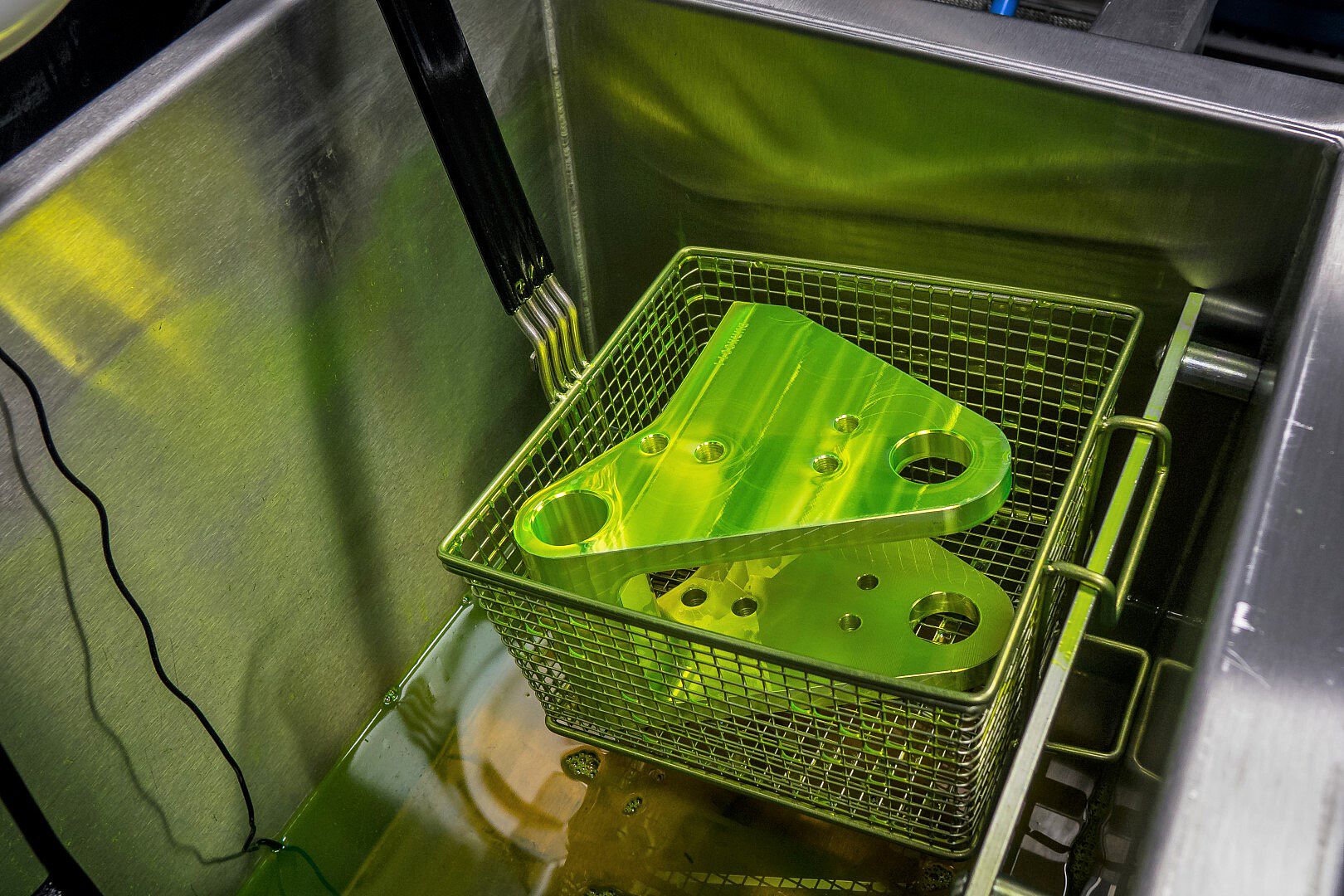Case Schelde Exotech
Unique NDT methods on riser forgings
Read more
Dye Penetrant Testing (PT) is used to find surface breaking defects. PT inspection is suitable for a wide variety of materials, but it is mainly used on non-ferrous metals. This method makes use of the capillary action principle. A liquid dye with low viscosity is applied to the test piece. Due to its low viscosity, it gets sucked into surface-breaking discontinuities. After allowing adequate penetration time, the excess penetrant liquid is rinsed off. After drying, a chalk-like developer is applied. The developer draws the penetrant dye from defects making a visible indication that can be interpreted by the inspector.
Contact us if you have a question or want to receive a quotation!
No. Non-relevant indications can appear because of inherent surface roughness or seams. Fingerprints or fibers can also produce non-relevant indications.
PT testing is useful immediately after any manufacturing process which is known to cause discontinuities. Therefore, it may sometimes be performed more than once during the manufacture of a part. It is important to carry out penetrant inspection before machining operations such as shot blasting, peening or grinding which can prevent penetrant inspections from finding these discontinuities.
Time
MT: fast inspection technique
PT: relatively slow process
Materials
MT: can only be applied in examination of ferromagnetic materials
PT: provides optimal results in all metals and alloys
Discontinuities
MT: detects not only surface cracks but also imperfections that are very near to the surface
PT: only detects discontinuities which are on surface and open for the dye to penetrate
Surface conditions
MT: no pre-cleaning and post-cleaning processes are necessary because surface pollutants don’t have adverse effect on inspection results
PT: Strict pre-cleaning is required
Temperature
MT: is applicable up to extreme temperatures (normally below Curie temperature)
PT: limited temperature conditions (5-60 degree Celsius)
Equipment
MT: power supply is required to operate yoke magnet
PT: no power supply needed
